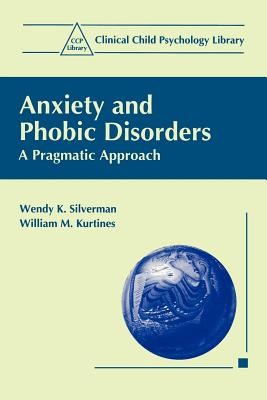
- We will send in 10–14 business days.
- Author: Wendy K Silverman
- Publisher: Springer
- ISBN-10: 0306452278
- ISBN-13: 9780306452277
- Format: 15.1 x 23 x 1.1 cm, softcover
- Language: English
- SAVE -10% with code: EXTRA
Reviews
Description
For many years, anxiety and phobie disorders ofchildhoodand adolescence were ignored by clinicians and researchers alike. They were viewed as largely benign, as problems that were relatively mild, age-specific, and transitory. With time, it was thought, they would simply disappear or go away-that the child or adolescent would magically outgrow them with development and that they would not adversely affect the growing child or adolescent. As a result ofsuch thinking, it was concluded that these internalizing problems were not worthy or deserving of our concerted and careful attention-that other problems of childhood and adolescence and, in particular, externalizing problems such as conduct disturbance, oppositional defiance, and attention-deficit problems de- manded our professional energies and resources. These assumptions and asser- tions have been challenged vigorously in recent years. Scholarly books (King, Hamilton, & Ollendick, 1988; Morris & Kratochwill, 1983) have documented the considerable distress and misery associated with these disorders, while reviews ofthe literature have demonstrated that these disorders are anything but transitory; for a significant number of youth these problems persist into late adolescence and adulthood (Ollendick & King, 1994). Clearly, such findings signal the need for treatment programs that work--programs that are effective in the short term and efficacious over the long haul, producing effects that are durable and generalizable, as weil as effects that enhance the life functioning of children and adolescents and the families that evince such problems.
EXTRA 10 % discount with code: EXTRA
The promotion ends in 19d.12:57:34
The discount code is valid when purchasing from 10 €. Discounts do not stack.
- Author: Wendy K Silverman
- Publisher: Springer
- ISBN-10: 0306452278
- ISBN-13: 9780306452277
- Format: 15.1 x 23 x 1.1 cm, softcover
- Language: English English
For many years, anxiety and phobie disorders ofchildhoodand adolescence were ignored by clinicians and researchers alike. They were viewed as largely benign, as problems that were relatively mild, age-specific, and transitory. With time, it was thought, they would simply disappear or go away-that the child or adolescent would magically outgrow them with development and that they would not adversely affect the growing child or adolescent. As a result ofsuch thinking, it was concluded that these internalizing problems were not worthy or deserving of our concerted and careful attention-that other problems of childhood and adolescence and, in particular, externalizing problems such as conduct disturbance, oppositional defiance, and attention-deficit problems de- manded our professional energies and resources. These assumptions and asser- tions have been challenged vigorously in recent years. Scholarly books (King, Hamilton, & Ollendick, 1988; Morris & Kratochwill, 1983) have documented the considerable distress and misery associated with these disorders, while reviews ofthe literature have demonstrated that these disorders are anything but transitory; for a significant number of youth these problems persist into late adolescence and adulthood (Ollendick & King, 1994). Clearly, such findings signal the need for treatment programs that work--programs that are effective in the short term and efficacious over the long haul, producing effects that are durable and generalizable, as weil as effects that enhance the life functioning of children and adolescents and the families that evince such problems.


Reviews